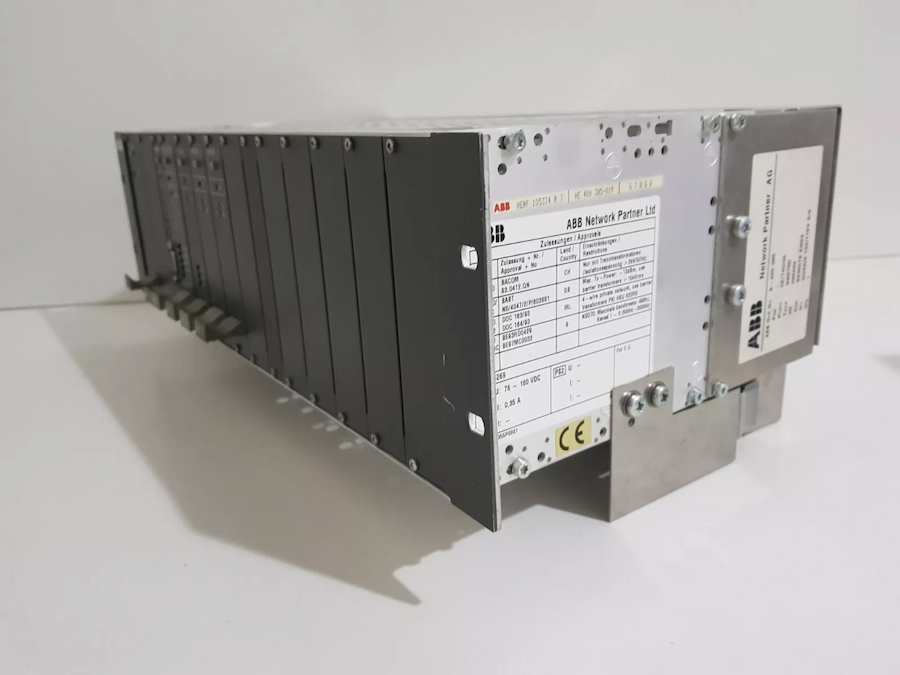
The NSD 70D is a teleprotection equipment used to transmit commands via digital channels. In the event of a fault, it makes a decisive contribution to rapidly and selectively isolating the faulty line.
Application
The NSD 70D is a digital teleprotection unit capable of transmitting up to 6 tripping signals via a 64 kBit/s or 56 kBit/s digital multiplexer channel, which can be equipped with either a contradirectional or a codirectional interface conforming to CCITT G.703, with an RS-422/V.11 interface or with an optical interface. For the G.703 interface to operate codirectionally, the multiplexer must operate in a plesiochronous mode, because terminal equipment and multiplexer each have their own clock oscillators with "slightly differing" frequencies(discrepancy < ±100 ppm). The slip this causes is compensated by periodically omitting an octet or repeating one. How often these "pattern slips" occur depends on the difference in the clock frequencies of the terminal equipment (NSD 70D) and the multiplexer. The ability to program the contra and codirectional interfaces and their integration in the same module, or using the RS-422/V.11 interface or the optical interface permits the NSD 70D to be easily adapted to the multiplexer's existing interface.
The NSD 70D can be used in blocking schemes, permissive and direct transfer tripping schemes and for the continuous transmission of commands in point-to-point or teed feeder systems. In all cases the hardware is the same.
The equipment is extremely simple to set and to operate, the parameters being set on programming switches.
The basic version of the NSD 70D is intended for the transmission of one command. By inserting further relay interface modules, it can be expanded for up to six independent commands. With the maximum complement of six commands, one NSD 70D is sufficient for the phase-discriminative protection of a double circuit line. The unblocking function, which closes an enabling contact for 200 ms in the event of loss of signal, is standard equipment on all units. This is of consequence mainly for permissive overreaching transfer tripping schemes.
All interfaces are DC isolated. The transmitter signal is activated by applying a DC signal at station battery voltage. The receiver is equipped with main and auxiliary contacts for each command output and a common alarm contact. A trip counter is optionally available.
The smallest version of an NSD 70D for one command comprises the following:
- 1 rack type G7BGa
- 1 power supply unit type G3HG, G3HI, G3HH, G3HK or G3HQ
- 1 DSP module type G3HP
- 1 data interface type G3HM, G3HR or G3HS
- 1 alarm interface type G3HE
- 1 relay interface type G3HC or G3HD
- 2 connecting cables type V9LE, one for the alarm interface and one for the relay interface
- 1 connecting cable for the data interface (V9LF for the PCM interface type G3HM / V9MG, V9MH, V9MI or V9MK for the RS-422 interface type G3HR / V9FZ, V9GA or V9GD for the F.O. interface type G3HS up to 30 km / V9GB, V9GC or V9LZ for the F.O. interface type G3HS up to 5 km).

